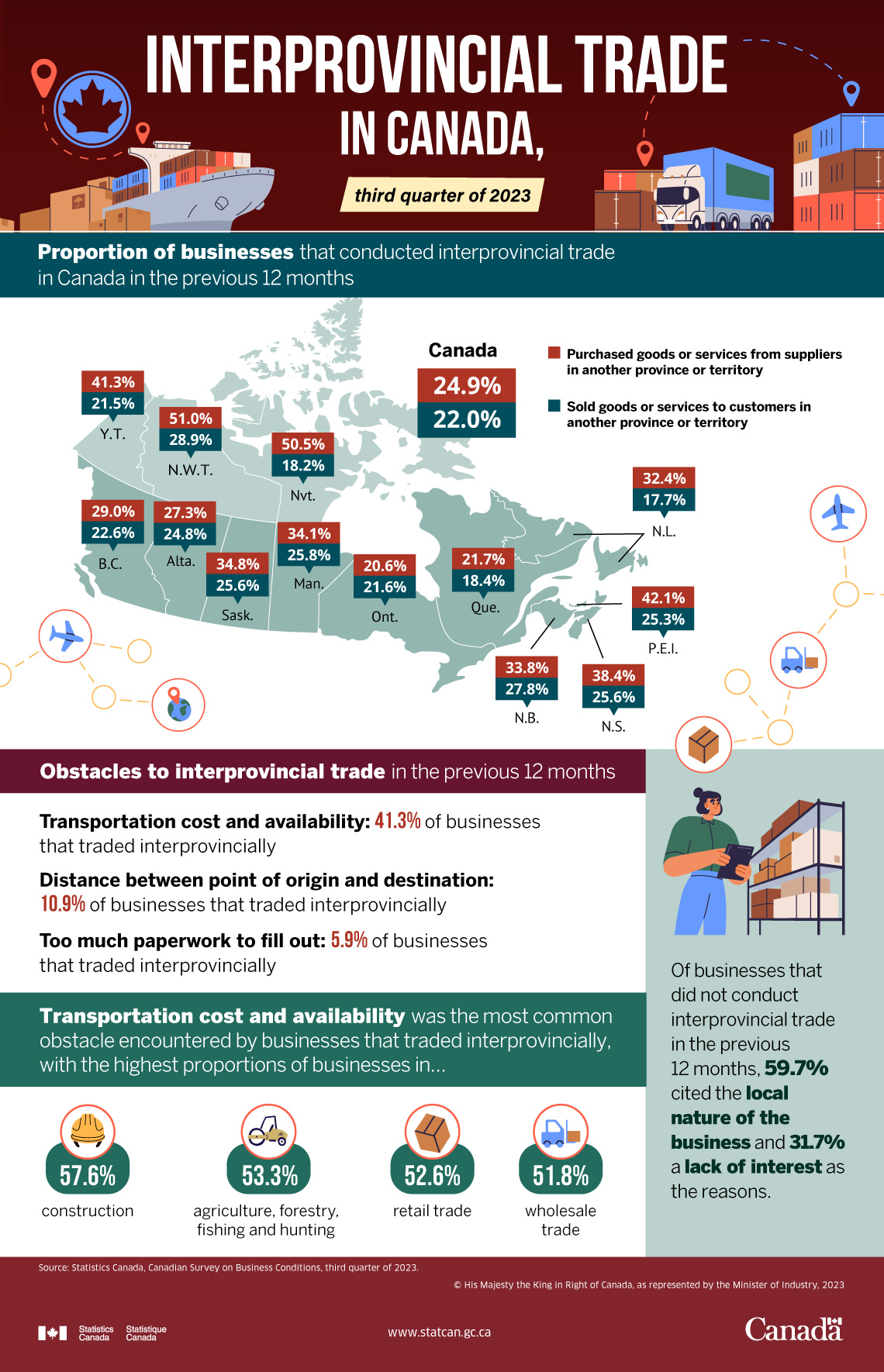Interprovincial Trade in Canada, third quarter of 2023
Release date: October 5, 2023

Description: Interprovincial Trade in Canada, third quarter of 2023
| Purchased goods or services from suppliers in another province or territory | Sold goods or services to customers in another province or territory | |
|---|---|---|
| % of businesses | ||
| Canada | 24.9% | 22.0% |
| Newfoundland and Labrador | 32.4% | 17.7% |
| Prince Edward Island | 42.1% | 25.3% |
| Nova Scotia | 38.4% | 25.6% |
| New Brunswick | 33.8% | 27.8% |
| Quebec | 21.7% | 18.4% |
| Ontario | 20.6% | 21.6% |
| Manitoba | 34.1% | 25.8% |
| Saskatchewan | 34.8% | 25.6% |
| Alberta | 27.3% | 24.8% |
| British Columbia | 29.0% | 22.6% |
| Yukon | 41.3% | 21.5% |
| Northwest Territories | 51.0% | 28.9% |
| Nunavut | 50.5% | 18.2% |
Obstacles to interprovincial trade in the previous 12 months
- Transportation cost and availability: 41.3% of businesses that traded interprovincially
- Distance between point of origin and destination: 10.9% of businesses that traded interprovincially
- Too much paperwork to fill out: 5.9% of businesses that traded interprovincially
Transportation cost and availability was the most common obstacle encountered by businesses that traded interprovincially, with the highest proportions of businesses in…
- Construction: 57.6%
- Agriculture, forestry, fishing and hunting: 53.3%
- Retail trade: 52.6%
- Wholesale trade: 51.8%
Of businesses that did not conduct interprovincial trade in the previous 12 months, 59.7% cited the local nature of the business and 31.7% a lack of interest as the reasons.
Source: Statistics Canada, Canadian Survey on Business Conditions, third quarter of 2023.
- Date modified: